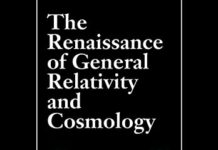
Ebook Info
- Published: 2016
- Number of pages: 510 pages
- Format: PDF
- File Size: 8.14 MB
- Authors: George Ellis
Description
Physics underlies all complexity, including our own existence: how is this possible? How can our own lives emerge from interactions of electrons, protons, and neutrons? This book considers the interaction of physical and non-physical causation in complex systems such as living beings, and in particular in the human brain, relating this to the emergence of higher levels of complexity with real causal powers. In particular it explores the idea of top-down causation, which is the key effect allowing the emergence of true complexity and also enables the causal efficacy of non-physical entities, including the value of money, social conventions, and ethical choices.
User’s Reviews
Reviews from Amazon users which were colected at the time this book was published on the website:
⭐I considered the repetitiveness of Ellis’s presentation to be thorough, but somehow unsatisfying. In the end, I’m not sure he made his general case, which I feel must be true. I almost got the impression he thought repetition would make it so. Of course, I will have to reread it to confirm; but he seemed to me to put too heavy a reliance on analogy and example: I think I had hoped for a general mathematical model rather than tables restating the text. I could have done with less attention to past opinions. Well worth the purchase none the less.
⭐This book is part of an ongoing rearguard action by many humans against a huge army of straw human beings who believe—and I mean believe, not just hypothesise—that nothing could be relevant to our lives but the doings of elementary particles and associated fields, or strings, or something else that mathematicians have come up with recently, and worse still, that everything humans do is entirely preordained by whatever laws govern those items, whence there is no point trying to do anything with our lives. Ellis’ enemies, like the enemies of so many today, would be people who advocate reductionism and determinism. These enemies, if they existed, would be believers of a kind, fundamentalist atheists, deniers of the soul. Perhaps some of them are indeed real flesh and blood, but we need not be concerned with them, for they would clearly be naive and superficial beings, certainly not thinkers at the forefront of the study of human nature today like S. Blackmore, D. Dennett, and S. Pinker.What might give weight to the present book is that the author is himself one of those who propound the kind of arcane mathematical constructions so dear to the field of fundamental theoretical physics these days. So who better than one of the cognoscenti to inform us of their limitations? Looking on the positive side, this is indeed a vast and erudite collection of examples of what Ellis calls top-down causation. There are so many examples, all intended to prove the same thing, that the book has an air of propaganda about it. So if you go along with whatever it is that the author is trying to prove, you may well be delighted with the whole enterprise. But if you feel at the outset that it rings false, you may find that it gets irritating.Ellis resuscitates the idea that Platonic forms really exist and are discovered by ourselves, transposing it to computer algorithms. But these are nothing without us, meaningless without us, unless there is someone or something else to which they could mean something. In their various instantiations, they are just meaningless assemblages of particles and fields that may or may not show up from time to time, from place to place, but probably wouldn’t. So we may by all means include them in an ontology, as Popper did, but it is not a part of the ontology that we really need as far as causation is concerned. We can do without it: by just applying the laws of physics to what happens we can see how everything that comes into being in the world of particles and fields has come into being, and if necessary, we can see how a human with some instantiation of the idea for the algorithm can come about by applying those same laws of physics and the shortcuts provided by the notion of evolution.We invent the laws of physics, too, as approximations to, or better representations of, the way things go out there. They are our ways of understanding what happens around us, always in terms of what is meaningful to us because we have evolved to be a part of what is out there. Even the ‘we’ mentioned here is just a convenient representation that we have evolved to help us interact more conveniently with what is out there. We invent this and it has relevance only because of us. It dies with us. Ellis may say that his algorithms were valid before humans existed and will remain valid after we are long gone, but it seems to me that only material instantiations of them could possibly still exist, and that they will be meaningless. They will play no useful role. What is really there are fields and particles. Little is gained by imputing reality to Platonic forms or computer algorithms. What is gained by the notion of computer algorithm is an explanation of something in terms of things which are relevant to us, that is, which have meaning for us.Ellis also speaks of the space of algorithmic possibilities, declaring that this space is not implied by physics or physical laws, but by logic. But that would make it irrelevant without logical agents, indeed non-existent, even though some specific algorithm may actually be executed regularly somewhere, for if there is no logical agent to appreciate what the relevant particles and fields are doing, then it is nothing but things, meaningless things, happening to particles and fields. Finally, Ellis asserts that our understanding of this space cannot be tested by physics laboratory experiments. But of course, that is because it isn’t a real space. It is only real to ourselves or like-minded agents.The arguments in this book remain feeble, even though repeated endlessly to try to give them weight. A last-ditch attempt to save the human from its materiality.
⭐An admirable, systematic approach to the issue of emergence from physics to sociology, of great originality, broad scope, and deep understanding. George Ellis argues with admirable clarity of thought that much of the world we live in is governed not by the blind dance of atoms, but by high-level causes and purposes. This is a much needed book and a remarkable synthesis across fields and levels. I know of no other book where the evidence for emergence is presented so thoroughly and with as much insight.
⭐Top-notch book. The only source out there that correctly describes the phenomena of top-down causation and its role in physics and the natural world. A very important read for any student of science and/or philosophy.
⭐Others linked the sun’s anti-entropic virucidal energy from energy-dependent changes in hydrogen-atom transfer in DNA base pairs in solution to supercoiled DNA, which protects all organized genomes from virus-driven energy theft and genomic entropy.Ellis comments on at least one of Schrodinger’s claims from “What is Life?” but he largely ignores the energy-dependent links from ecological variation to ecological adaptation that also were reported in two recent publications. See: “Structural diversity of supercoiled DNA” and “Epigenetics and Genetics of Viral Latency.”Ellis cannot be held accountable for not knowing the most recent work (May 11, 2016) reported that “…viral latency is responsible for life-long pathogenesis and mortality risk…”However, it seems inappropriate for anyone whose opinions are held in high regard to ignore everything else that is known about energy-dependent RNA methylation and the biophysically constrained morphological and behavioral diversity of all living genera. Experimental evidence has established facts that are being used to link the Precision Medicine Initiative to the National Microbiome Initiative via attempts to crack the olfactory code.When researchers report the direct link from energy-dependent RNA methylation to differences in behavior, this book will be compared to Masatoshi Nei’s “Mutation-driven evolution.” The biggest difference between the two seems to be that Ellis tries to link emergence to evolution via Darwin’s “conditions of life.”But he now bears the burden of the report in “Science” of nutrient energy-dependent pheromone-controlled weekend evolution of the bacterial flagellum: “Evolutionary resurrection of flagellar motility via rewiring of the nitrogen regulation system.”The “resurrection” is obviously energy-dependent and it also links the innate immune system to biophysically constrained biologically-based cause and effect in species from microbes to humans via RNA-mediated amino acid substitutions. Resurrecting Darwin’s “conditions of life” after they were ignored by neo-Darwinists for many decades should not be attempted by physicists, cosmologists, or biologically uninformed theorists from any other discipline without first learning more about what is known about the RNA-mediated links from physics and chemistry to molecular epigenetics.
Keywords
Free Download How Can Physics Underlie the Mind?: Top-Down Causation in the Human Context (The Frontiers Collection) in PDF format
How Can Physics Underlie the Mind?: Top-Down Causation in the Human Context (The Frontiers Collection) PDF Free Download
Download How Can Physics Underlie the Mind?: Top-Down Causation in the Human Context (The Frontiers Collection) 2016 PDF Free
How Can Physics Underlie the Mind?: Top-Down Causation in the Human Context (The Frontiers Collection) 2016 PDF Free Download
Download How Can Physics Underlie the Mind?: Top-Down Causation in the Human Context (The Frontiers Collection) PDF
Free Download Ebook How Can Physics Underlie the Mind?: Top-Down Causation in the Human Context (The Frontiers Collection)


